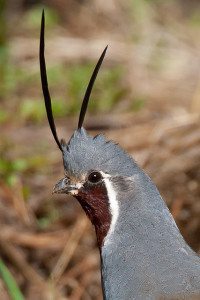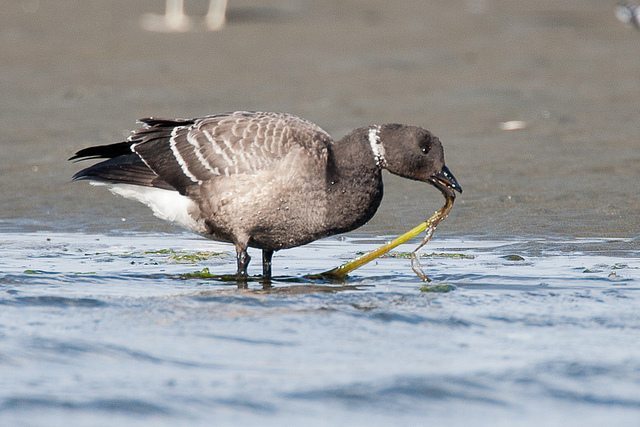The avian richness of Sonoma County
By Bruce Mast
The composite checklist of native, non-introduced birds for all nine Bay Area Counties adds up to 549 species.* A quick scan of the county checklists confirms a familiar pattern: species diversity is richest in the coastal counties.
Marin County, with its world-class vagrant traps at outer Point Reyes, leads the pack with a checklist of 481 species. San Francisco, though heavily urbanized, includes some great vagrant traps in the western part of town and lays claim to the vagrant super-magnet Farallon Islands, which puts it in respectable second place with 472 species. San Mateo and Sonoma Counties follow behind with 445 and 437 species respectively.
But birding a location with a long vagrant checklist doesn’t mean you will see many birds in the field. What if we exclude the vagrants and locally rare (i.e., less than annual) species and just focus on the regularly occurring birds? Even though Solano and Contra Costa offer access to some great Central Valley birds, the coastal counties still lead the way due to their unique habitats for gulls, alcids, rocky shorebirds, tube-noses, and diving ducks.
Among the coastal counties, Sonoma vaults into first place with 281 species, Marin and San Mateo drop to second and third place with 271 and 264 species, and San Francisco falls all the way to sixth place with just 243 species.

So what’s so special about Sonoma? The short answer is the quality and diversity of habitat.
Southeastern Sonoma County includes the extensive Napa-Sonoma and Petaluma Marshes that extend well up the Petaluma River to Ellis Creek and Shollenberger Park. Ridgway’s and Black Rails are regular denizens, along with small numbers of Tundra Swans and Greater White-fronted, Snow, Ross’s, and Cackling Geese. Similar habitats in the bay-fronting counties to the south have been more heavily impacted by urbanization.


Sonoma’s interior coast range offers dry upland habitats—oak savannah, gray pines, and chaparral–that are sparse or non-existent in the other coastal counties. With multiple peaks reaching above 3,000 feet, the Mayacama Mountains are a good place to find Poorwill, Purple Martin, Canyon Wren, California Thrasher, and Bell’s Sparrow. Lewis’s Woodpecker is generally more dependable in Sonoma County than the other coastal counties.
Along the coast, Sonoma offers forests of redwoods, pines, and douglas fir that extend all the way up the north coast into Canada. These forests host Solitaires, Dippers, Spotted Owls, and Pileated Woodpeckers.
By comparison, Southern San Mateo County gets into the Santa Cruz Mountains but the heart of the mountains is in Santa Clara and Santa Cruz Counties. Western Marin features some nice coastal forests but the elevations are lower and these forests are a biogeographical island. They are separated from the north coast by the “Petaluma Gap,” that swath of lowland grassland through northern Marin and southern Sonoma counties that extends from the bay to the coast. It’s a natural feature, not an artifact of human agricultural clearing, and forest birds hate to cross it. For example, Chestnut-backed Chickadees have evolved two distinct subspecies to the north and south of the gap, rather than cross it to inter-breed.


Because of Sonoma’s connectivity to the north coast, Sooty Grouse can be found in the coast range and Mountain Quail are regular throughout the interior. Forest specialties such as Gray Jay have been known to wander south across the county line.
Combine these habitats with the varied coastal habitats along Highway 1 and around Bodega Bay, plus excellent pelagic birding over Bodega Canyon, and Sonoma County adds up to a great destination for lengthy bird lists and diverse habitats in close proximity.
——————————
*According to county checklists compiled by John Sterling and Bruce Deuel. See sterlingbirds.com/california_county_birding_intro.html
——————————
Bruce Mast, one of the top 20 eBirders in Sonoma County, will be leading two field trips in Sonoma as part of Birdathon 2015. On Sunday, April 12, he’ll lead Birds and Wine in Sonoma County, which combines birding with private tastings at two premium wineries in the Alexander Valley—the Robert Young Estate Winery and Hawkes Winery. Then on Saturday, April 18, he will lead a Big Six Hours in Sonoma County trip. Last year, Bruce led a similar trip that identified 87 species in six hours. There are a few spaces left on each trip! For information and registration, see the Birdathon Field Trips web page. For a map of birding sites in Sonoma County, see sonomabirding.com/birdingmaps/sonoma.htm

